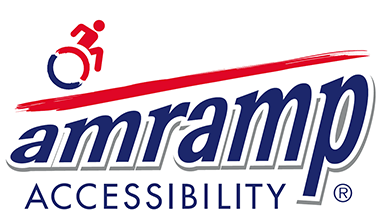Living in Arizona as a wheelchair user can be summarized with one word: inaccessible.
Without a pricey and wheelchair-accessible van, my only option is public transportation. The closest bus stop to my house is three-quarters of a mile away and rolling there leaves me exhausted. When the bus is late, or a shuttle isn’t available, I’m stranded in the Arizona heat until I can find a ride.
I never thought much about public transportation until an accident left me paralyzed at age 18.
I’m from Yuma, where public transportation is nonexistent. At the time of my accident, my family, friends and my entire life was in Yuma. Barely an adult and fresh in my disability journey, I left the only home I knew to move to Phoenix where I could access services to live independently.
But even in Phoenix, the availability of public transportation varies greatly depending on where you are. In central Phoenix, every major street has bus lines, streetcars and light rail. But once you venture slightly outside of the downtown area, access to public transportation drops drastically.
Public transit limits where we can live and work
Lack of public transit limits where I can live, how much I can work, when I can spend my money, and how often I can spend time with my children outside of the house.
After decades of underfunding, public transportation infrastructure in Phoenix and its surrounding cities are designed to serve cars. Compared to other major cities, Phoenix ranks 55th in overall public transportation.
When a city centers the infrastructure around cars, it leaves out many people who don’t have access to a car. Whether you have any disability, can’t afford a car or can’t get a license, public transportation is as essential as food and water.
Public transit:New Valley Metro CEO aims to attract riders lost to pandemic
So, I was thrilled to learn that Arizona is receiving $884 million from President Biden’s infrastructure law to upgrade our public transportation system. The investment will expand the light rail to reach more areas and extend and upgrade the bus system. Access to reliable daily transportation is life-changing for people with disabilities.
I can’t help but think how much this investment would have helped my younger self. Throughout my 20 years as a wheelchair user, I’ve only had a couple of handicap accessible vans, all of which I had to fundraise money to purchase.
The vans I could afford were not reliable and broke down often. I couldn’t drive them outside of the triangle within Phoenix, Yuma and Tucson (the area I call “purgatory”). I couldn’t visit family in Mexico or take my family on vacation to California.
Infrastructure investments will help a lot
I don’t think able-bodied people understand how powerful it is to be able to move freely and efficiently. People with disabilities want to be productive members of society, but we are often held back – not for a lack of trying – but because our infrastructure was not built for people with disabilities in mind.
With public transit, we can go to work, pay taxes on our income, spend our money within the local community, and be engaged community members.
The reason people with disabilities congregate in cities is because of public transportation accessibility. Rural America just doesn’t have it. If we had these transportation investments two decades ago, I could have stayed in Yuma surrounded by family and friends as I adjusted into my new life with a disability.
I didn’t have that choice. Now, with these new investments in local public transit, people with disabilities won’t be forced to leave their hometowns for lack of accessibility.
Around a quarter of Americans live with some kind of disability. If we want disabled people to truly be a part of the community, officials across all levels of government must prioritize public transit when making new infrastructure investments.
And when the federal government works with cities to design accessible infrastructure, everyone benefits. From lower income communities, to working teens saving for their first car, to people whose car is in the shop, we all rely on public transportation at some point in our lives.
No one, regardless of their ability, should be stranded in the Arizona heat because they don’t have access to a car. I’m proud that the Biden administration is making real progress toward building a truly inclusive society.
For the first time in a long time, I’m hopeful for the future we are building for the next generation.
Marcos Castillo is a Chicano disability rights advocate and lives in Gilbert with his partner and three adult children. Reach him at [email protected].
When you're looking for accessibility products, you need a company with experience. Amramp is familiar with the guidelines of the Americans with Disabilities Act as well as local zoning laws.
Certified Aging in Place Speciliasts (CAPS) are trained by the National Association of Home Builders on remodeling and retrofitting existing homes for special needs.
Amramp can evaluate any home to determine what changes are needed to make the living space as accommodating as possible in the years ahead.
Check out Amramp’s full line of accessibility solutions or take advantage of Amramp’s FREE evaluation to review your needs and lay out a plan that is right for you by calling 888-715-7598 or emailing to [email protected].




